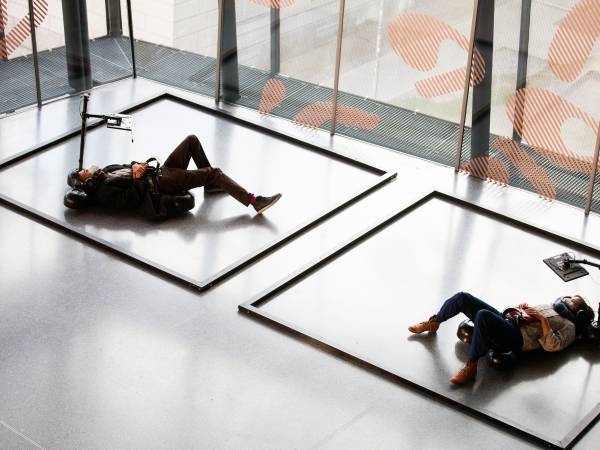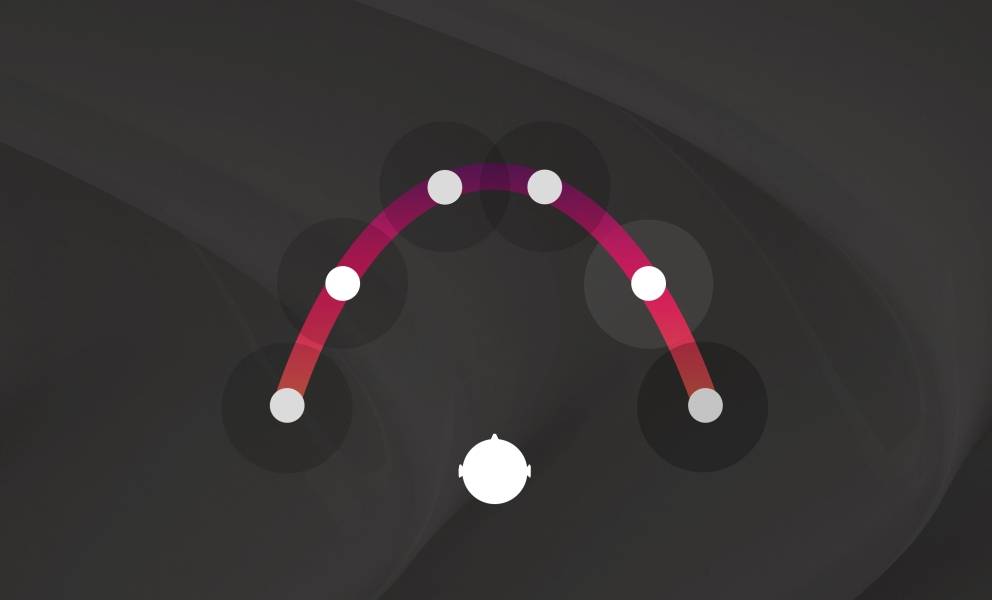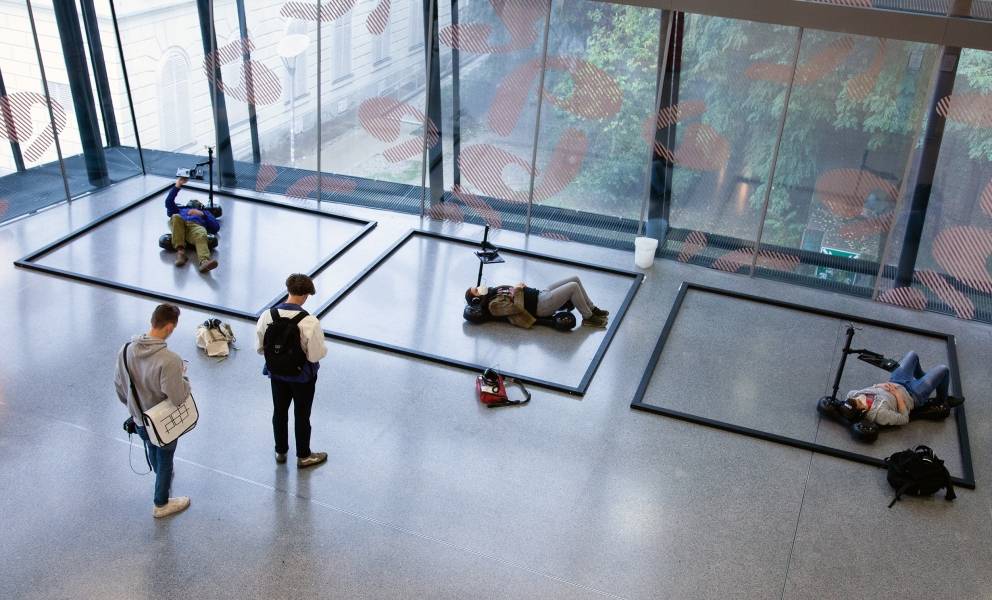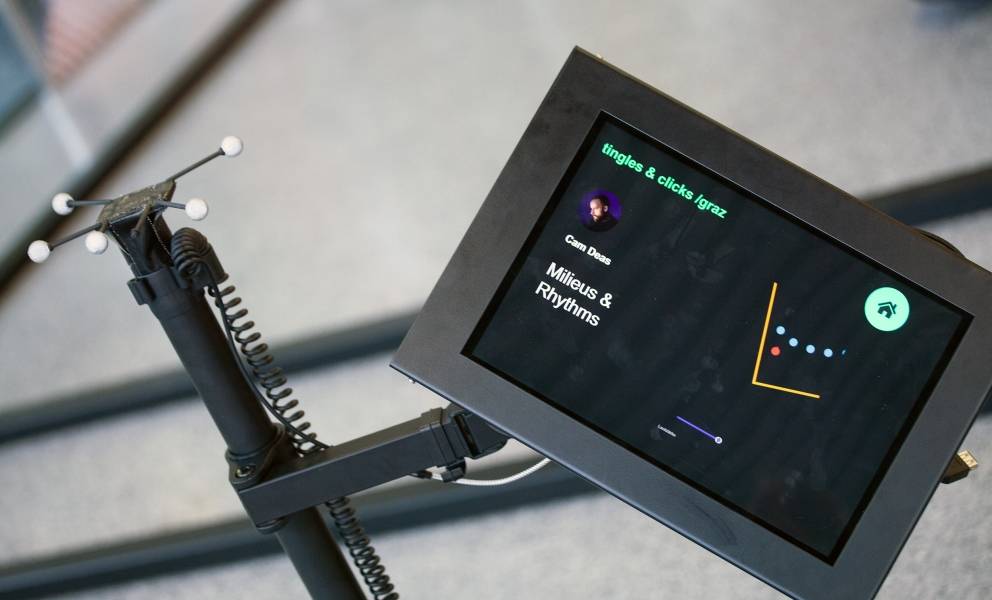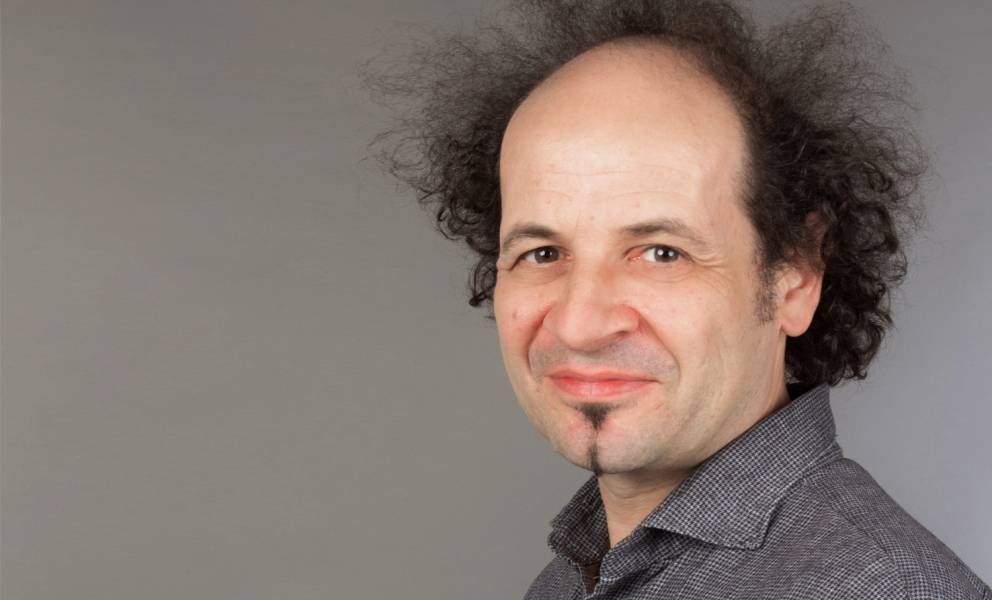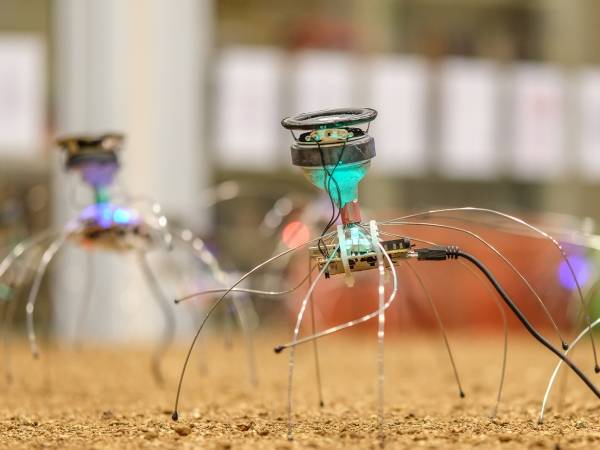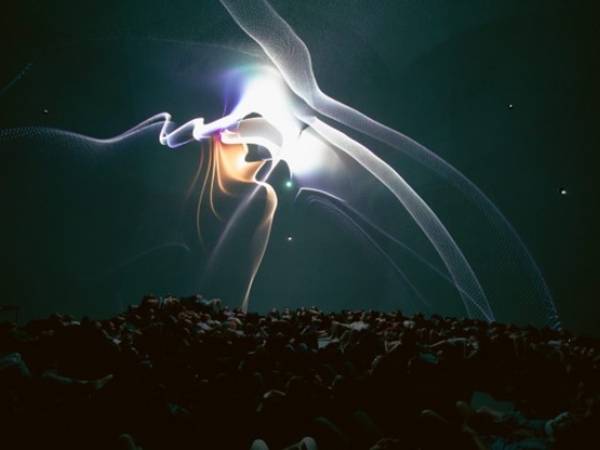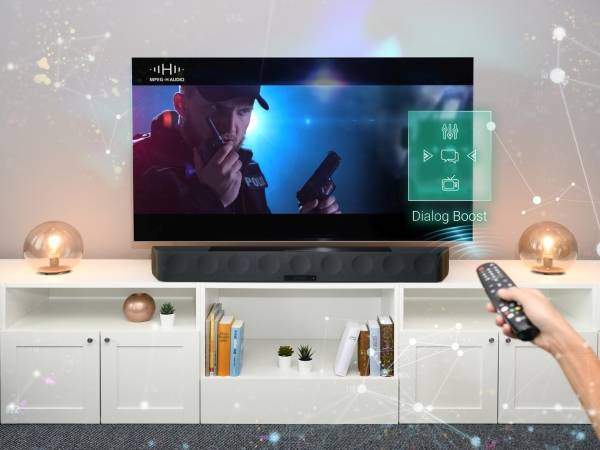6 Minuten
Wear a protective mask, keep a safe distance, reduce social contacts and so on. Social distancing instructions have accompanied us through the COVID-19 health crisis from the very beginning. Interpersonal contact has been pushed back in favor of protecting the individual. Numerous festivals had to deal with strict seating arrangements, vaccination passport controls and approval procedures; the physical space offered musicians only very limited performance opportunities. As a result, musical activities have shifted to the virtual space. Zoom and Skype conferences were used for performances, while other organizers streamed performances live or on demand without an audience.
ORF musikprotokoll as a field of experimentation
I work as a producer and co-curator for ORF musikprotokoll, the oldest Austrian festival for contemporary and experimental music. In 2020, we wanted to find a new form of presentation for experimental music that uses the WWW and explores the possibilities of this electronic space.
In addition to commissioning and performing compositions, musikprotokoll has repeatedly developed alternative performance practice projects since 2012. For example, the carousel project Let's merry-go-round!, the vocal project Die Logik der Engel or Homages, a mobile audio exhibition. What all of our own productions had in common was that we prepared a technical environment and sometimes elaborate performance settings and then invited composers to "play" them. We have retained this approach for tingles & clicks.
tingles & clicks - the concept
In tingles & clicks, we wanted to explore the physicality lost during the pandemic due to protective measures through commissioned compositions that focus on a quasi-tactile online experience.
Inspired by a musical attitude of minimal and abstract use of sound, the use of field recordings, and with a view to the ASMR movement (Autonomous Sensory Meridian Response), the aim was to create spatial and intimate listening experiences in the place where many people were or had to be during the pandemic: their own four walls.
It was important to us that the users of the tingles & clicks project website could freely explore sound environments with their bodies and also navigate through them with their bodies.
The actual sound material was provided by the composers. They were provided with a tool with which they could place sound objects in the virtual space and define their behavior.
Sound-space-sound
Music is often described as a temporal art. But just as important is how we perceive sound in space - near and far, left and right, up and down. In tingles & clicks, the users found themselves in a primarily acoustic space in which sound objects - far, near, up and down - were arranged. The sound space reacted to the users' body movements; they not only listened "spatially", but in a way also helped to create this space.
Central to this project - as with every other commissioned work - were the artistic approach, the concept, and, of course, the sound experience itself. tingles & clicks was therefore first and foremost a music project. As a result, ORF musikprotokoll commissioned compositions from several exciting composers of experimental music: Natasha Barrett, Andrea Sodomka, Marco Donnarumma, Svetlana Maraš, kӣr, Ulf Langheinrich and Cam Deas.
With the help of an audio engine with face tracking developed by the IEM (Institute for Electronic Music and Acoustics) in cooperation with musikprotokoll, users were able to explore the sound environments of the composers. The main actors at the IEM were Robert Höldrich as IEM coordinator and the developers Matthias Frank, Franz Zotter, and Lukas Gölles.
The setting
Users need a PC or laptop, a webcam, internet access, and headphones. In other words, exactly the equipment familiar from the home office. (The easy accessibility of this network project was important to us.) You enter the project address into the browser and you are right in the middle of it.
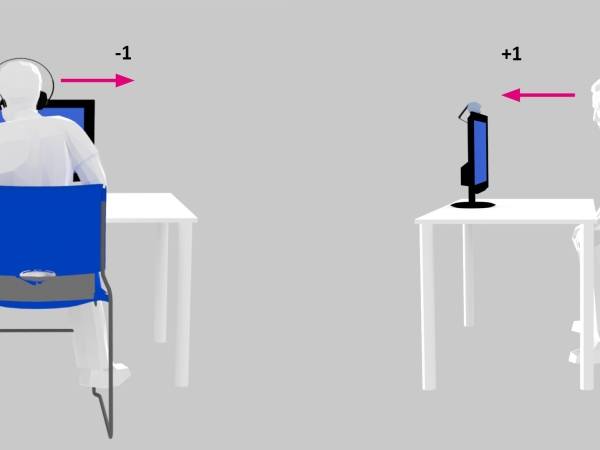
The users are sitting in front of their screens, wearing headphones and with their webcams switched on. They call up the tingles & clicks website. The position of the head on the x- and y-axis - i.e. left-right and front-back - is now tracked by a webcam.
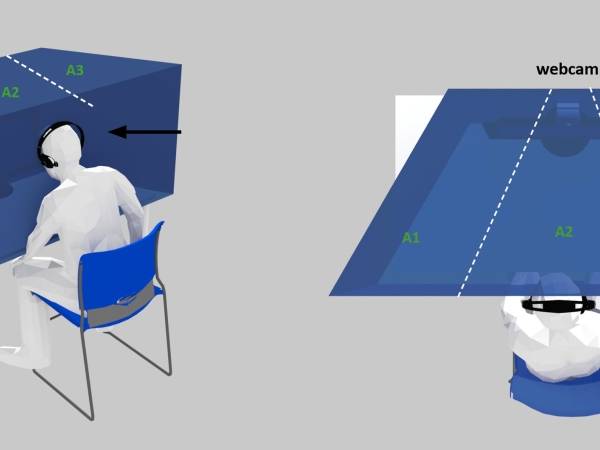
The area covered by the webcam is also the virtual sound space. It is divided into three non-overlapping sectors (A1, A2, A3). An ambient sound is assigned to each sector.
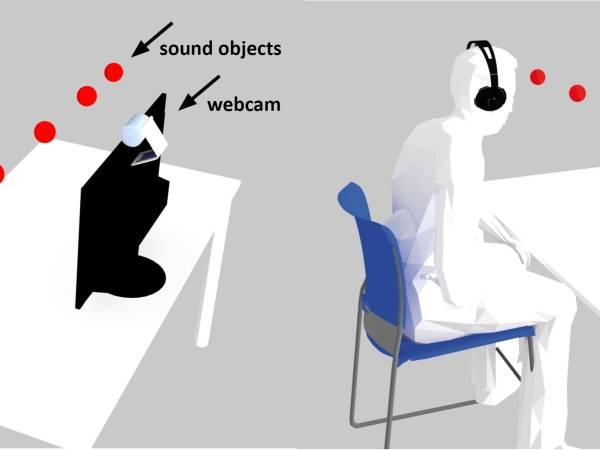
Up to 6 sound objects are distributed across the area captured by the webcam. The floating sound objects are invisible and can only be heard in this virtual sound space with its ambient surfaces. The audience decides what, how, and where to hear by listening and navigating. Changes in head position - tilting, turning ... - allow users to move around in these sound spaces.
Each room lasts for 8 minutes. However, there is no beginning and no end - the experience is therefore more like a sound installation.
Although the project looks very much like a technological experiment at first glance, it is not exactly that. Of course, sound control via facial recognition holds interesting possibilities in itself. But not least, rules of conduct such as those imposed on us by COVID-19, this interplay of proximity and distance, have an equivalent in this technology. In our case, face tracking turns the body into a navigation tool.
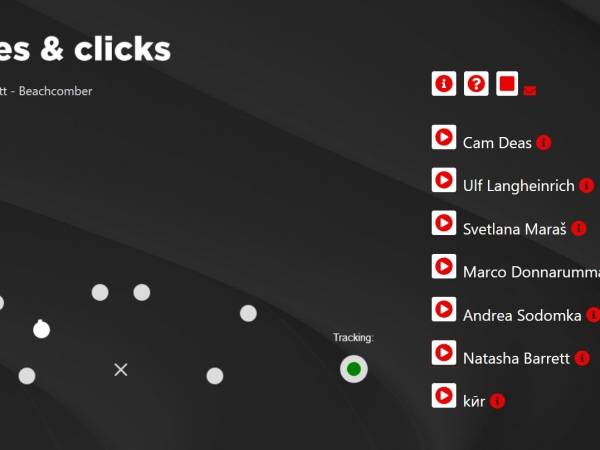
In addition to the audio files, the composers provide a .json file in which the following parameters are defined:
- Position of the sound object to be placed.
- Nature of the room (small and dry or large and reverberant).
- Fade times between the ambient sectors.
- Variable to define how quickly the amplitude of the source decreases with distance.
The actual sound material consists of 3 stereo ambient audio files and 6 sound object mono audio files.
Here you can listen to 3min from four tingles & clicks /graz sound environments:
Eine Ausschnitt aus einer Klangumgebung Beachcomber (2020) von Natasha Barrett.
Ein Ausschnitt aus der Klangumgebung Tiefblau und Kristallweiß – Die Farben der Distanz (2020) von Andrea Sodomka.
Ein Ausschnitt der Klangumgebung Milieus & Rhythms (2020) von Cam Deas.
Ein Ausschnitt der Klangumgebung L'ampleur du souffle (2020) von Svetlana Maraš.
From virtual to physical space
After the pandemic situation began to calm down, we realized an interactive installation for ORF musikprotokoll 2021 at MUMUTH in Graz: tingles & clicks/ graz. The one-person experience at home became a public interactive media installation.
Lying on roller boards, users move around in fields measuring 4 by 4 meters and are captured by an optical multi-cam tracking system.
The users' limited freedom of movement in the beetle position is intended to increase their attention to what they are hearing. In physical space, the sounds behave in the same way as in the online project.
A tablet mounted above the users' heads enables them to select one of the compositions; the visual feedback serves as orientation in the 4 x 4 m field in the physical space. Navigation is not only done with the head, but with the whole body. The type of movement is up to the individual. (Some people stayed in one position for minutes, others moved quickly back and forth on their roller boards and followed the changes in sound).
The following composers were presented at tingles & clicks/ graz Variante at MUMUTH in Graz: Andrea Sodomka, Svetlana Maraš, Marco Donnarumma, Natasha Barrett, Karlheinz Essl, Martina Claussen and the collective Lain Iwakura, Korin Rizzo, Leonie Strecker, Nico Mohammadi.
tingles & clicks is a continuation of the multi-year ORF musikprotokoll series music for bodies in motion, in which the listener's position and surroundings as parameters of listening are up for discussion. tingles & clicks is a commissioned production by ORF musikprotokoll in cooperation with the Institute for Electronic Music and Acoustics at the University of Music and Performing Arts Graz - IEM and SHAPE - Sound, Heterogeneous Art and Performance in Europe. Funded by the "Creative Europe" program of the European Union. Svetlana Maraš, kӣr, and Cam Deas are SHAPE Artists 2020.
Fränk Zimmer
Fränk Zimmer is a media artist, curator, and festival organizer. After training as a communications engineer in Luxembourg, he studied musicology in Graz and Vienna. He uses open-source software and hardware in sound and media installations in both public and art-specific spaces. Zimmer also works as a producer and co-curator for ORF musikprotokoll, a festival for contemporary and experimental music. In the last five years, he has focused on 3D audio and the development of interactive, web-based listening environments. In 2023, he founded "Sounding Future", an online platform dedicated to current technical and artistic developments in music and art.
Article topics
Article translations are machine translated and proofread.
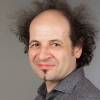 Fränk Zimmer
Fränk Zimmer 